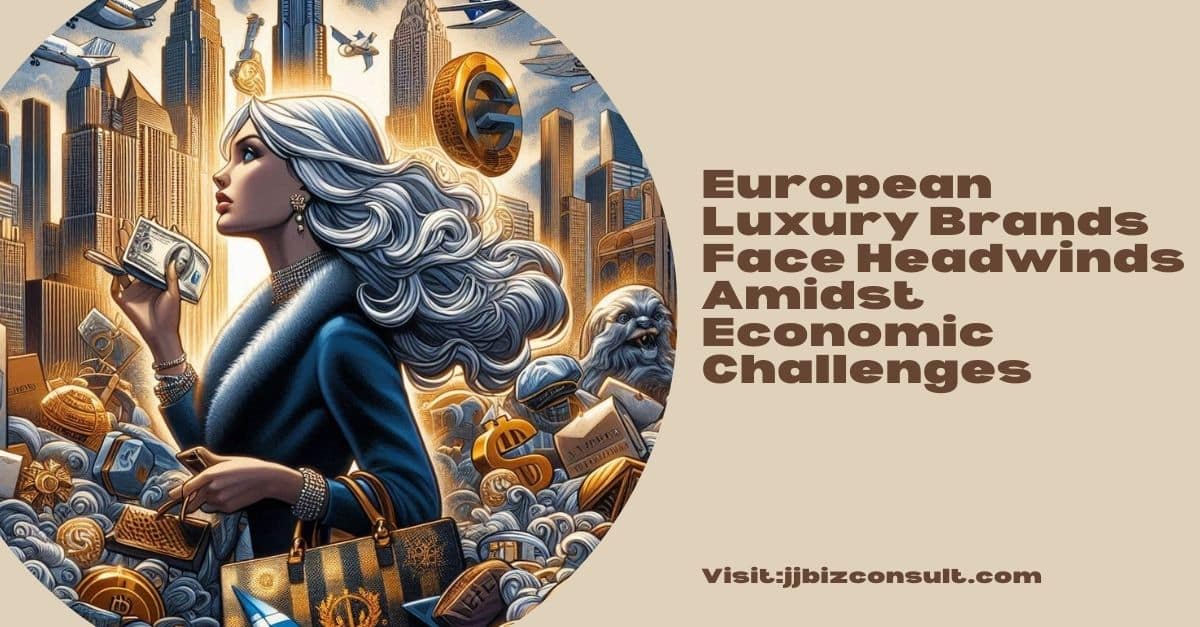
European Luxury Brands Face Headwinds Amidst Economic Challenges
European Luxury Brands Face Headwinds: Bank of America Securities has recently downgraded European luxury stocks, citing a projected slowdown in demand from high-spending Chinese consumers in the second half of 2024 and the following year. This downgrade has impacted prominent brands like LVMH and Hugo Boss.
Challenges Facing European Luxury Brands
- Weakening Chinese Demand: The decline in demand from Chinese consumers, who have been a significant driver of the luxury goods market, is a major concern for European luxury brands.
- Economic Slowdown: The broader economic slowdown in Europe and other regions is also contributing to the decline in demand for luxury goods.
- Leadership Changes at LVMH: The recent leadership shifts within LVMH, with all five of Bernard Arnault’s children taking on operational roles, may be creating uncertainty and impacting the company’s performance.
What European Luxury Brands are affected?
Several other prominent European luxury brands have been affected by the recent downgrade and economic challenges:
These brands are all grappling with the same issues of weakening demand from Chinese consumers and broader economic uncertainties.
How are European Luxury Brands adapting to these challenges?
Luxury brands are employing several strategies to adapt to the current economic challenges and shifting consumer demands:
1. Digital Transformation
Many luxury brands are investing heavily in their online presence and e-commerce platforms to reach a broader audience. This includes enhancing their websites, leveraging social media, and partnering with online luxury retailers.
2. Diversification of Markets
Brands are expanding their presence in emerging markets beyond China, such as Southeast Asia, the Middle East, and Africa. This helps mitigate the risk of over-reliance on any single market.
3. Sustainability Initiatives
Sustainability is becoming a key focus for luxury brands. They are adopting eco-friendly practices, using sustainable materials, and promoting ethical production processes to appeal to environmentally conscious consumers.
4. Exclusive Collaborations and Limited Editions
To maintain exclusivity and drive demand, brands are launching limited edition products and exclusive collaborations with artists, designers, and other brands. This creates a sense of urgency and uniqueness.
5. Personalized Customer Experiences
Luxury brands are enhancing the in-store and online shopping experience by offering personalized services. This includes bespoke products, personalized recommendations, and VIP customer services.
6. Innovation in Product Offerings
Brands are continuously innovating their product lines to stay relevant. This includes introducing new product categories, such as tech-integrated fashion items, and experimenting with new designs and materials.
7. Strengthening Brand Heritage
Emphasizing their rich history and craftsmanship, luxury brands are reinforcing their brand heritage to differentiate themselves from competitors and justify their premium pricing.
8. Adapting to Local Preferences
Brands are tailoring their products and marketing strategies to suit local tastes and cultural preferences in different regions. This localized approach helps them connect better with diverse consumer bases.
9. Enhanced Customer Engagement
Utilizing data analytics, brands are gaining insights into customer preferences and behaviors. This allows them to engage more effectively with their customers through targeted marketing campaigns and personalized communications.
10. Resilient Supply Chains
To ensure product availability and manage costs, luxury brands are focusing on building more resilient and flexible supply chains. This includes diversifying suppliers and investing in technology to improve supply chain efficiency.
These strategies are helping luxury brands navigate the current economic landscape and position themselves for future growth.
European Luxury Brands leader LVMH’s Position
Despite these challenges, France remains a key exporter of luxury bags to China, with LVMH accounting for a significant portion of French exports. However, the ongoing tensions between China and Europe could pose risks to LVMH’s business.
Arnault’s Net Worth
Bernard Arnault, the founder and CEO of LVMH, has seen a significant decline in his net worth. Once the world’s richest person, Arnault has now fallen to fifth place on the Bloomberg Billionaires Index. This decline is largely due to the downturn in LVMH’s stock price.
European Luxury Brands leader LVMH
LVMH (Moët Hennessy Louis Vuitton) is the world’s largest luxury goods conglomerate, encompassing a diverse portfolio of 75 prestigious brands across various sectors. Here are some key aspects of how LVMH is adapting to the challenges of diversifying markets:
Key Strategies
- Expanding Digital Presence LVMH has been investing heavily in digital transformation, enhancing its e-commerce platforms and leveraging social media to reach a broader audience. This includes innovative online shopping experiences and virtual try-ons.
- Localized Marketing The company tailors its marketing strategies to suit local tastes and cultural preferences. For example, LVMH brands often create region-specific campaigns and products to resonate with local consumers.
- Sustainability Initiatives LVMH is committed to sustainability, with initiatives aimed at reducing environmental impact and promoting ethical practices. This includes using sustainable materials and supporting local artisans.
- Exclusive Collaborations To maintain exclusivity and drive demand, LVMH brands frequently launch limited edition products and collaborate with renowned artists and designers. These collaborations create a sense of uniqueness and urgency.
- Strengthening Brand Heritage Emphasizing the rich history and craftsmanship of its brands, LVMH reinforces its brand heritage to differentiate itself from competitors and justify premium pricing.
- Diversifying Product Lines LVMH continuously innovates its product offerings, introducing new categories and experimenting with designs and materials. This helps keep the brands relevant and appealing to a wide range of consumers.
Challenges in Diversifying Markets
- Cultural Adaptation Understanding and adapting to different cultural preferences and consumer behaviors can be complex. LVMH must balance global prestige with local relevance.
- Regulatory Compliance Navigating varying regulations across different countries requires significant resources and expertise. This includes compliance with import laws, marketing regulations, and consumer protection standards.
- Economic Volatility Emerging markets can be economically unstable, affecting consumer spending power. LVMH needs to be prepared for fluctuations in demand and currency exchange rates.
- Local Competition In new markets, LVMH faces strong competition from established local brands. Gaining market share requires substantial investment in marketing and brand building.
- Supply Chain Management Establishing efficient supply chains in new regions can be challenging. Ensuring quality and consistency across different markets is crucial for maintaining brand reputation.
LVMH’s Global Presence
LVMH’s portfolio includes iconic brands such as Louis Vuitton, Dior, Fendi, Givenchy, and Tiffany & Co. The company operates over 6,000 stores worldwide and continues to expand its global footprint.
Despite the challenges, LVMH’s strategic initiatives and strong brand portfolio position it well to navigate the complexities of diversifying markets.
Conclusion: European Luxury Brands Face Headwinds
The European luxury sector is facing headwinds, driven by factors such as weakening Chinese demand and economic uncertainty. While LVMH remains a dominant player, the company is not immune to these challenges. As the industry navigates these complexities, investors will be closely watching the performance of luxury brands and their ability to adapt to changing market conditions.
Earlier in 2023, Bernard Arnault Net Worth: The New Richest in the World
Forbes Billionaires List 2024: Music Royalty, Tech Titans, and Historic Firsts!





